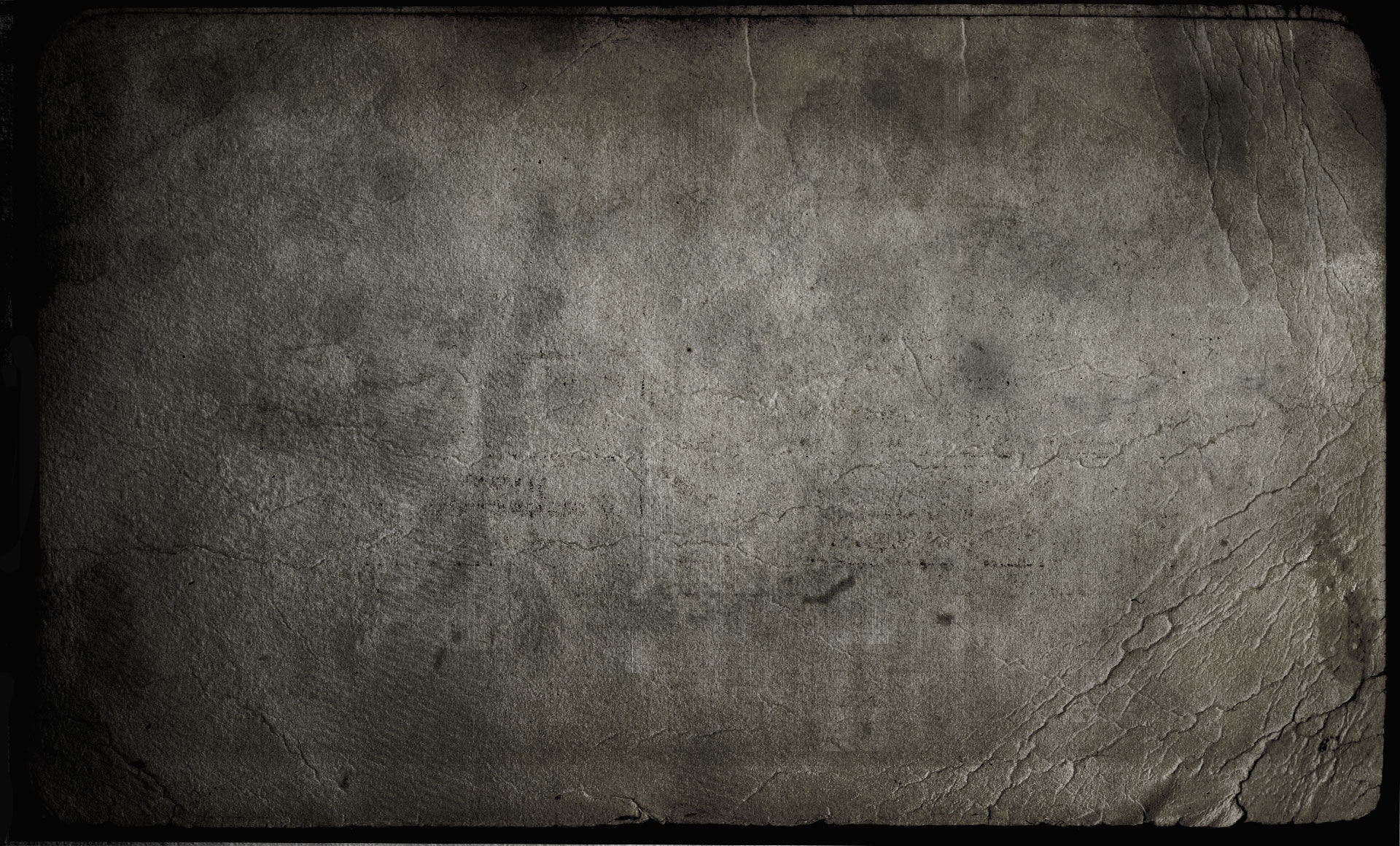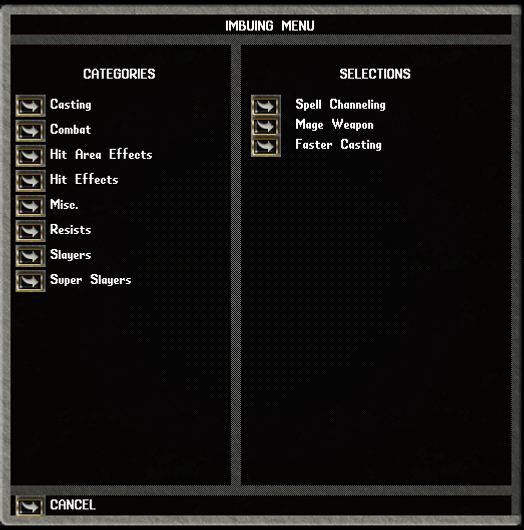
Wiki - Imbuing
Imbuing is a skill that allows player characters to add resists and/or magic properties to loot or crafted items in a controlled, though limited way and to unravel magical items into the basic resources needed for such embellishment. A character who is trained in this skill has the skill title ‘Artificer’.
Imbuing requires no ‘tool’ but does require you to be close to a special kind of forge, a soulforge. There are several kinds of soulforge: The public forge in the center of Royal City The Queen’s Soulforge in the Royal Palace Player Crafted Soulforges which can be placed in your house, made by a carpenter with some imbuing skill and being a copy of the queen’s forge in appearance A small soulforge, a very rare drop from Osiredon the Scalis Enforcer Experienced crafters will know that the usual way to open a crafting menu is by double clicking the tool. There is no tool, so how do you open the gump? Through the skill menu.

Resources
Imbuing a property onto an item requires up to 3 different types of ingredients. The first type the artificer obtains by unravelling items which have magic properties. The resource obtained is governed by the intensity of the magic properties on the item being unravelled. Much like working colored ores for a smith or colored leather for a tailor, if your skill is not high enough, you will be unable to obtain the higher level resource. The item you have tried to unravel will remain intact. Unravelling is recommended as your principle training method, not only will you gain in skill, but you will also accumlate a supply of the resources you will need later.
The resources obtained from unravelling are:
Magical Residue - no skill requirements
Enchanted Essence - requires 45.1 skill
Relic Fragments - requires 95.1 skill
The second type of ingredient needed is small gemstones, these can be bought from a jeweller NPC or looted from monsters. There are a large number of different creatures which have gemstones as loot. Gargoyles and Dragons are examples. Gemstones are also found in shipwreck chests by fishermen.
The third type of ingredients are only needed to imbue properties at greater than 90% intensity.
Unravelling
All magic properties have ‘weight’. These weights can be seen on the imbuing menu when a property is selected to imbue.
Property weights for unravelling work as follows:
- 199 Total Weight = Magical Residue
200 - 449 Total Weight = Enchanted Essence
450+ Total Weight = Relic Fragment


All items, except most clothing, with magic properties, whether loot or crafted, can be unravelled. Most clothing is not sturdy enough to survive unravelling. Unravelling an item destroys it. You will see from the last two lines of the crafting gump pictured to the left that you can either unravel items individually or in bulk, simply put all the items you wish to unravel into any container and use the last option on the gump.

An imbued weapon may have up to 7 properties in total, in the case of a GM crafted weapon, the damage increase is considered a property already on the item. So an artificer can imbue 6 other item properties on the weapon.
Select ‘imbue item’ from the imbuing menu and target the item you wish to imbue. You will now have a list of property categories to choose from, selecting a category shows the properties within that category. This menu can be seen to the left.
When you select a property a further page of the menu will give you details including the weight, the cost of the imbue in resources, a brief description of the property and your chance to succeed. Failure will cause the loss of your resources. A successful imbue will add the item property tag ‘imbued’ to the item. Logically the more properties, and higher intensities you try to squeeze into a piece the more difficult it becomes and the lower your percentage success chance.
You Can
Overwrite an existing property to either increase or reduce it.
Increase or reduce resists on armor pieces.
Imbue Any Cloth Items + Shoes (Sash, Apron, Robe, Hats, etc)
You Can Not
Imbue mods to spellbooks. Spellbooks can however, be leveled to add properties.
Imbue the Self Repair property onto items; if the property already exists on the item imbuing will remove it.
Change the damage type on a weapon.
Max Number of Properties
Items with over seven properties may not be Imbued.
Max Weight
Non-Exceptional Jewelry - 500
Clothing - 1200
One Handed Non-Exceptional/Looted - 700
Exceptional Armor/One Handed - 750
Non-Exceptional Bow - 750
Exceptional Bow/Non-Exceptional Two Handed Melee - 800
Exceptional Two Handed Melee - 850
The maximum intensity of hit-leech properties is related to weapon speed. Imbuing swingspeed increase after imbuing a hit-leech property will cause the leech intensity to drop. Always imbue swingspeed increase first. Attempting to add a second of any of these types of property on a weapon will overwrite and replace the first. a ‘slayer’ property. a ‘hit spell’ effect a ‘hit area’ effect.
Bonuses & Quests
Certain bonuses exist from race or location, Gargoyles have a racial bonus increasing their chance of a successful imbue.
The public forge in Royal City grants a bonus.
The Queen’s forge, which requires that you have 10,000 loyalty points to the queen to enable you to use it, also grants a bonus.
Skill Gain & Power Scrolls for the skill are obtained by 3 simple ‘exchange’ quests from the Gargoyle artificer NPCs stationed around the Royal City soulforge.
Beninort gives the quest Secrets of the Soulforge, the quest item is 50 magic residue, the reward a 105 or 110 power scroll (random).
Aurvidlem gives the quest Knowledge of the Soulforge, the quest item is 50 enchanted essence, the reward a 115 power scroll, or (rarely) a runic hammer and chisel.
Ansikart gives the quest Mastery of the Soulforge, the quest item is 50 relic fragments, the reward a 120 power scroll.

